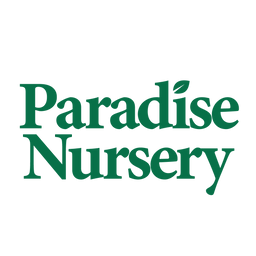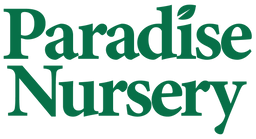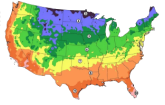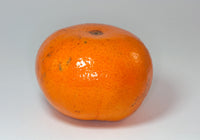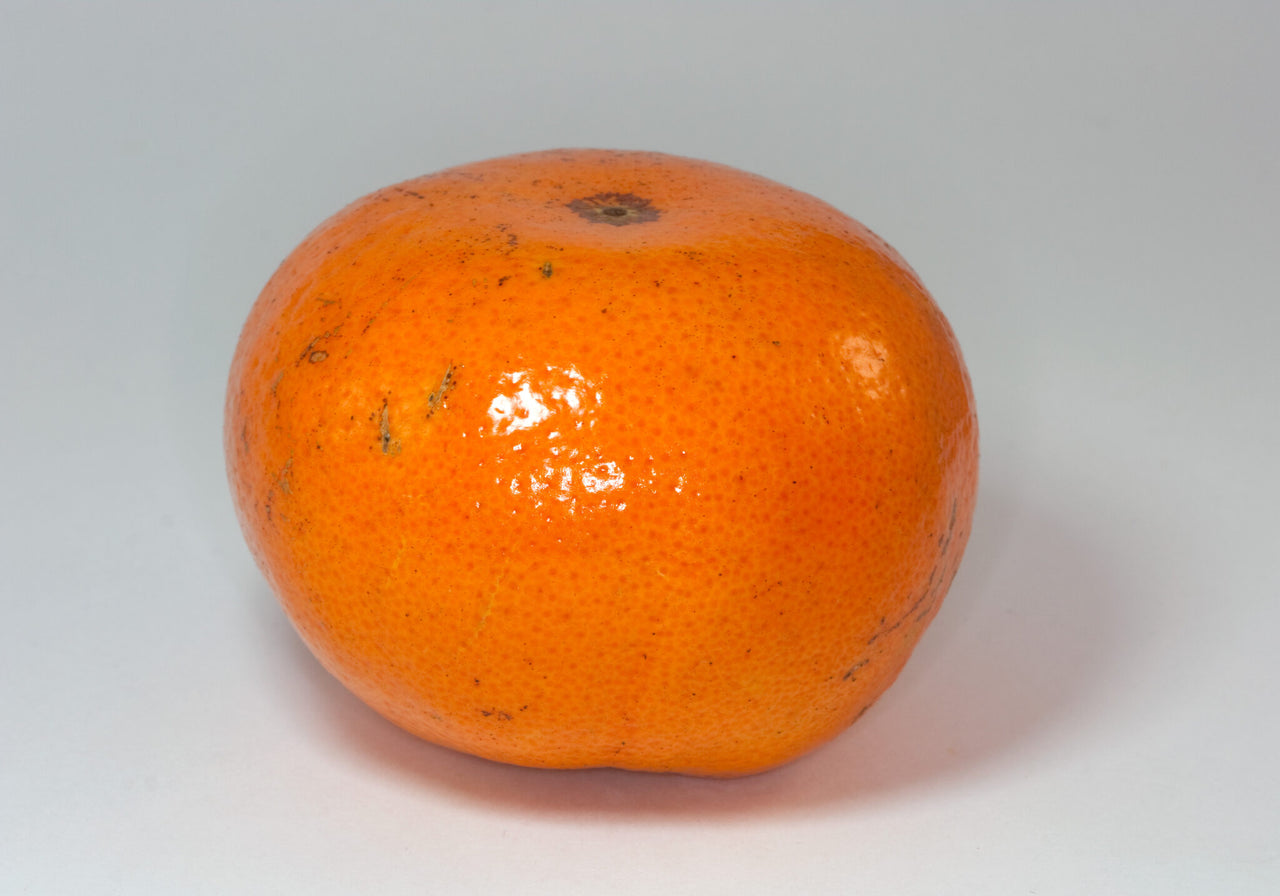The California Honey Mandarin tree is available in Standard, Semi-Dwarf, and Dwarf forms. The Semi-Dwarf and Standard trees grow with a single trunk that branches out into a canopy, while Dwarf varieties are topped low, resulting in a bush-like shape, which makes them great for growing in pots. Though citrus trees can grow over 20 feet tall, most gardeners prune them to maintain a height of 9–15 feet, making them an excellent choice for home gardens. For optimal growth, plant trees at least 9 feet apart, and provide more space if you prefer larger growth.
How to Plant, Water, and Fertilize a Mandarin Tree
Planting
- Sunlight: Plant your Honey Mandarin tree in full sun for the best growth and fruit production.
- Soil Requirements: Amend the soil with high-quality planting mix and fertilizer, ensuring the soil drains well.
Watering
- Spring to Summer: Water newly planted trees twice per week during the warmer months.
- Fall to Winter: Reduce watering to once per week in cooler weather. In hotter climates or sandy soils, more frequent watering may be needed.
Fertilization
- Spring and Summer Fertilization: Use a citrus fertilizer with a 2-1-1 NPK ratio during spring through summer to promote growth. Organic options like blood meal and manure are rich sources of nitrogen.
- Winter Fertilization: Apply fertilizers with higher phosphorus and potassium, such as bone meal or humus, in winter to encourage flowers and fruit development.
Pest and Problem Management
The Honey Mandarin tree is relatively pest-free and not highly attractive to birds or animals like squirrels, making it an easy-care option for home gardeners.
Ideal Growing Regions
This tree thrives in Southern California counties such as Los Angeles, Ventura, Santa Barbara, Riverside, Orange, and San Diego.
Citrus tree spacing depends on the variety (dwarf, semi-dwarf, or standard), with recommended distances ranging from 6-10 feet for dwarf trees, 10-15 feet for semi-dwarf, and 12-25 feet for standard varieties, though a minimum of 15 feet is often suggested for full-size trees.
Sunlight Requirements for Healthy Citrus Trees
Citrus trees thrive in bright, direct sunlight. To ensure strong growth, vibrant foliage, and a generous fruit harvest, your tree should receive a minimum 6 hours of full sun each day. Sunlight fuels the production of sugars within the leaves, which helps the tree develop flavorful, juicy fruit.
Instructions How to plant citrus trees:
Plant citrus trees in an area that receives over 6 hours of direct sunlight per day, in well-draining soil. Plant about 10 feet apart for home or high-density orchards. Spacing when planting will affect the overall size and shape of the trees.
Citrus Tree Planting Directions
-
Dig a hole twice as wide and as deep as the plant's container
-
Mix half the dug soil with the same amount of planting mix
-
Remove the plant from the pot and place it in the center of the hole with the top of the roots level with the ground
-
Backfill the hole with the amended soil
-
Create a berm around the plant with the remaining soil
-
Spread planting mix like mulch inside the berm
-
Top-dress with fertilizer
-
Water until flooded
Watering - Irrigation Management - How to Water
How to: To water fruit trees, provide enough water to saturate the soil directly around the trunk before the tree’s leaves wilt.
Quantity - Deliver about 10 - 25 gallons of water per week during the growing season.
Frequency- Irrigation frequency depends on factors like temperature, humidity, wind speed, soil type, and plant health. In general, water newly planted young trees twice per week during the growing season. Specifically, irrigate weekly in Early Spring, then 2 - 3 times per week as the weather warms during Spring and Summer. Reduce irrigation frequency in the Fall and Winter.
Lack of water, combined with high light and heat/water loss, causes the leaf's stomata to close, the leaf surface to heat up, and chlorophyll breakdown, resulting in the appearance of yellowing leaves. Nutrients move…
Types of Automatic Irrigation Systems -
Bubblers, sprinklers, and drips are the most common types of automatic irrigation systems. The duration a system should run depends on the emitter's flow rate. Automatic irrigation systems help ensure consistent watering times and quantity and reduce operator error.
Automatic Irrigation
Automatic irrigation systems increase efficiency by ensuring consistent watering times and amounts by reducing operator error. The duration a system should run depends on the flow rate. To determine your flow rate, collect the water over a set timeframe, or use a 2-4 GPM bubbler. Bubblers are very commonly used for fruit trees, but people also use drip and sprinkler systems.
By following these watering instructions, you can help ensure that your fruit trees receive the moisture they need to thrive and produce abundant, healthy fruit.
Citrus Tree Fertilization - How To Fertilize Citrus Trees
The numbers 7-3-3 on our organic fertilizer represent the N-P-K ratio, which indicates the percentage by weight of the three primary nutrients essential for plant health.
Apply this fertilizer with a higher ratio of nitrogen to phosphorus and potassium in the Spring and Summer to promote plant growth. Use a fertilizer with a higher ratio of phosphorus and potassium to nitrogen in the Winter or before plants flower to improve yields.
WHEN TO FERTILIZE:
Use 7-3-3 every three months from Spring (March-April) through the fall. Use 3-12-12 Harvest Booster before plants flower or during winter dormancy (December - January).
HOW MUCH FERTILIZER:
Apply 1 cup (150 grams) for every 1" diameter of the trunk or 15-gallon size. Apply 2 cups (300 grams) for every 2" diameter of the trunk or 25-gallon size.
HOW TO FERTILIZE:
Instructions: Till the top layer of the soil and create a ring/berm/watering well above ground around the tree's canopy to allow water to collect for the tree roots. Spread fertilizer above the roots, avoiding the trunk. Provide water to incorporate fertilizer into the soil.
Pruning
The size and shape of your citrus trees will depend on the cuts you've made in the past, which will also determine the tree's future growth. To effectively prune your citrus trees, first, you'll need to locate the tree's main trunk starting from the ground and lateral branches. Remove any dry branches, twigs, leaves, suckers, or water sprouts. Try to create an open center and balanced, symmetrical canopy.
You could also "Top" the plant. This is when you cut the main trunk of the plant early on to promote lateral growth instead of vertical growth. This is advantageous for fruit production because it will often provide larger yields.
Harvesting
To harvest the fruits of your labor, use pruning shears or sharp scissors to cut the stem close to the fruit, leaving a small piece of stem attached. Avoid pulling or twisting the fruit, as this can damage the fruit or the tree. Harvest when the fruit is at its peak ripeness, indicated by color and a slight softness to the touch. Most citrus trees produce spring flower blossoms in the late spring, and fruits are ripe in the winter and can stay on the tree into the following spring. Store citrus in a cool, dry place. Some varieties require refrigeration, while others do not.
Instructions on pest management for fruit trees:
- Monitor for Pests:
- Regularly inspect fruit trees for signs of pest infestation, such as chewed leaves, distorted growth, or the presence of insects or larvae.
- Keep an eye out for common fruit tree pests, including aphids, scale insects, mites, caterpillars, and fruit flies.
- Cultural Practices:
- Maintain good cultural practices, such as proper pruning, watering, and fertilizing, to promote healthy, resilient fruit trees that are better able to withstand pest attacks.
- Remove and destroy any fallen fruit, leaves, or other plant debris that may harbor pests or disease pathogens.
- Natural Predators:
- Encourage natural predators of pests, such as ladybugs, lacewings, and predatory wasps, by providing habitat and avoiding the use of broad-spectrum pesticides that may harm beneficial insects.
- Plant flowering plants nearby to attract pollinators and beneficial insects that help control pest populations.
- Physical Barriers:
- Install physical barriers, such as tree wraps or trunk guards, to protect fruit trees from crawling pests like ants and rodents.
- Use floating row covers or netting to exclude flying insects, birds, and other pests from accessing fruit trees.
- Biological Control:
- Consider using biological control methods, such as releasing beneficial nematodes or predatory insects, to target specific pests while minimizing harm to non-target organisms.
- Introduce parasitic wasps, predatory mites, or other natural enemies of pest insects to help control populations without the need for chemical pesticides.
- Integrated Pest Management (IPM):
- Implement an integrated pest management (IPM) approach that combines multiple pest control strategies, including cultural, biological, physical, and chemical methods, to effectively manage pest populations while minimizing environmental impact.
- Monitor pest populations regularly and use thresholds to determine when intervention is necessary, prioritizing the use of non-chemical control methods whenever possible.
- Selective Pesticide Use:
- Use chemical pesticides as a last resort and only when non-chemical methods have proven ineffective or when pest populations exceed acceptable thresholds.
- Selectively choose pesticides that are least harmful to beneficial insects, pollinators, and the environment, and follow label instructions carefully to minimize risks to human health and the ecosystem.
Frequently Asked Questions About Citrus Trees
1. How much sun do citrus trees need?
Citrus trees require full sun—at least 6 to 8 hours per day. In warm climates, extra sunlight improves sweetness and fruit color. Indoor citrus should be placed in a south-facing window or under grow lights.
2. What soil and pH are best for citrus?
Citrus grows best in well-drained soil with a pH of 6.0–6.5. In clay soils, plant on a mound to improve drainage. Containers should use fast-draining citrus or cactus mix.
3. How do I plant a citrus tree correctly?
Dig a hole the depth of the root ball and 2–3 times wider. Keep the graft union above soil level, backfill with native soil, water deeply, and form a watering basin around the tree. Plant in early spring after frost risk.
4. How far apart should I plant citrus trees?
Standard citrus trees should be spaced 12 feet apart, while dwarf or semi-dwarf trees can be spaced 8–10 feet apart. This prevents overcrowding and ensures good air circulation.
5. When is the best time to plant citrus in California?
The ideal time is early spring once frost danger has passed. This gives the roots time to establish before summer heat. Avoid late fall plantings in frost-prone areas.
6. How often should I water citrus trees in the ground?
In summer, water deeply every 7–10 days. In cooler seasons, water less frequently. Adjust based on soil type—sandy soils need more frequent watering, while clay soils need less.
7. What about watering newly planted citrus trees?
New citrus trees need more frequent irrigation—every 3–7 days depending on temperature and soil. Keep the root ball moist but not waterlogged for the first year.
8. How deep are citrus roots?
Most citrus roots are in the top 24 inches of soil. Deep watering should penetrate this zone to promote healthy root development without waterlogging deeper layers.
9. Should I mulch citrus trees?
Yes—apply 2–4 inches of mulch to retain soil moisture, regulate temperature, and reduce weeds. Keep mulch several inches away from the trunk to prevent disease.
10. How and when should I fertilize citrus?
Feed 3–4 times per year between late winter and mid-summer with a citrus-specific fertilizer containing nitrogen and micronutrients. Avoid fertilizing in late fall.
11. Why are my citrus leaves yellow?
Yellow leaves may indicate nitrogen deficiency, overwatering, or poor drainage. If veins remain green with yellow between, the tree may be lacking iron. Adjust watering and apply balanced fertilizer.
12. Do citrus trees need pruning?
Minimal pruning is required. Remove dead wood, crossing branches, suckers from below the graft, and water sprouts. Light shaping is best in late winter to spring.
13. How do I prevent sunburn on citrus branches?
After pruning, protect exposed branches with a whitewash (interior white latex paint diluted 1:1 with water). This prevents sunburn and bark cracking.
14. Do citrus trees need pollination partners?
Most citrus trees are self-pollinating and do not need a second tree. Bee activity, however, can improve yields.
15. Why do flowers or small fruit drop?
Fruit drop, often called "June drop," is natural. Trees shed excess fruit in late spring. Stress from heat, water fluctuations, or nutrient issues can increase drop.
16. When will my citrus tree produce fruit?
Lemons and limes may fruit in 1–3 years. Oranges, grapefruits, and mandarins typically take 3–5 years to bear well.
17. How long does fruit take to ripen?
Ripening time varies: lemons take 4–6 months, while oranges may take up to a year. Taste fruit rather than relying on color alone, as citrus can remain green but still be ripe.
18. How should I water container citrus?
Water when the top 2–3 inches of soil are dry. In warm weather, containers may need daily watering. Ensure pots drain freely.
19. How often should I repot a citrus tree?
Repot every 2–3 years, refreshing the soil and pruning circling roots. Step up to a slightly larger pot as the tree grows.
20. How do I prevent root and crown rot?
Keep water away from the trunk and graft union. Plant on mounds in heavy soil and ensure good drainage. Never bury the crown.
21. How cold-hardy are citrus trees?
Kumquats and satsumas are the hardiest, tolerating brief dips into the mid-20s°F. Lemons and limes are the most frost-sensitive, often damaged below 30°F.
22. What causes curled, scribbled leaves?
This is citrus leafminer damage. It’s mostly cosmetic on mature trees. Young trees may require treatment during new flushes of growth.
23. What is the black coating on leaves and fruit?
This is sooty mold growing on honeydew secreted by insects like aphids or scale. Control the insects and ants that farm them to eliminate the mold.
24. What common pests affect citrus?
Aphids, scale, mites, thrips, and citrus leafminer are common. Integrated Pest Management (IPM) using horticultural oils and beneficial insects is recommended.
25. What is HLB (citrus greening)?
HLB is a deadly disease spread by the Asian Citrus Psyllid. There is no cure. Buy only from certified nurseries and never transport citrus trees across counties.
26. Should I seal pruning cuts?
No. Sealants are unnecessary and can trap moisture. Make clean cuts just outside the branch collar and allow natural healing.
27. Why do my fruits taste sour?
Sour fruit can result from variety genetics, insufficient heat, shade, or nutrient imbalance. Oranges in cool coastal areas may stay less sweet.
28. Should I let grass grow under citrus?
No. Keep a weed-free zone under the canopy to prevent nutrient and water competition. Mulching is recommended instead.
29. What irrigation system works best?
Drip irrigation or micro-sprayers are ideal. Place emitters away from the trunk and expand coverage as the tree grows.
30. How do I test my soil drainage?
Dig a hole, fill with water, and see how quickly it drains. Good soils drain within 24–36 hours. If water stands longer, plant citrus on a mound.
